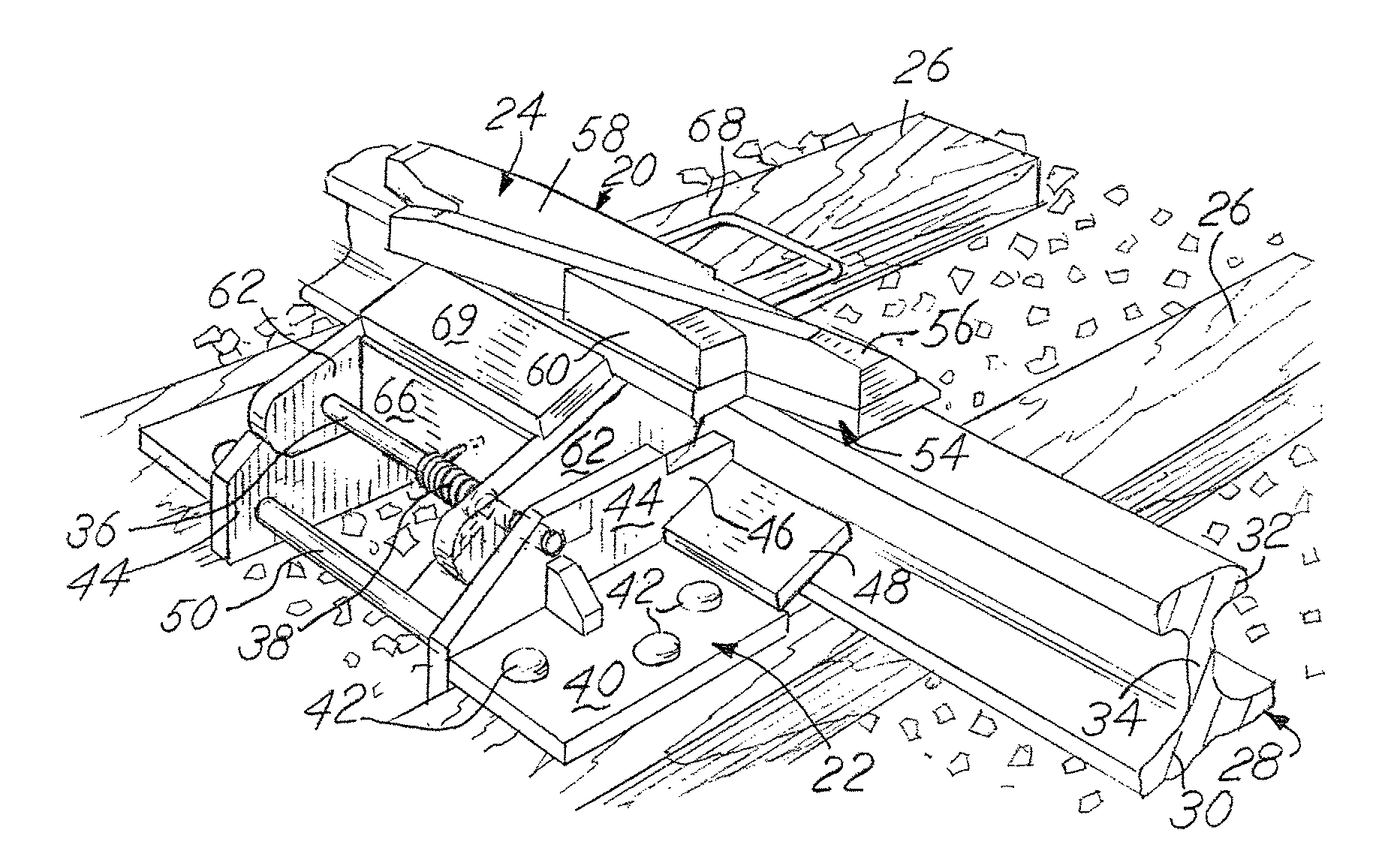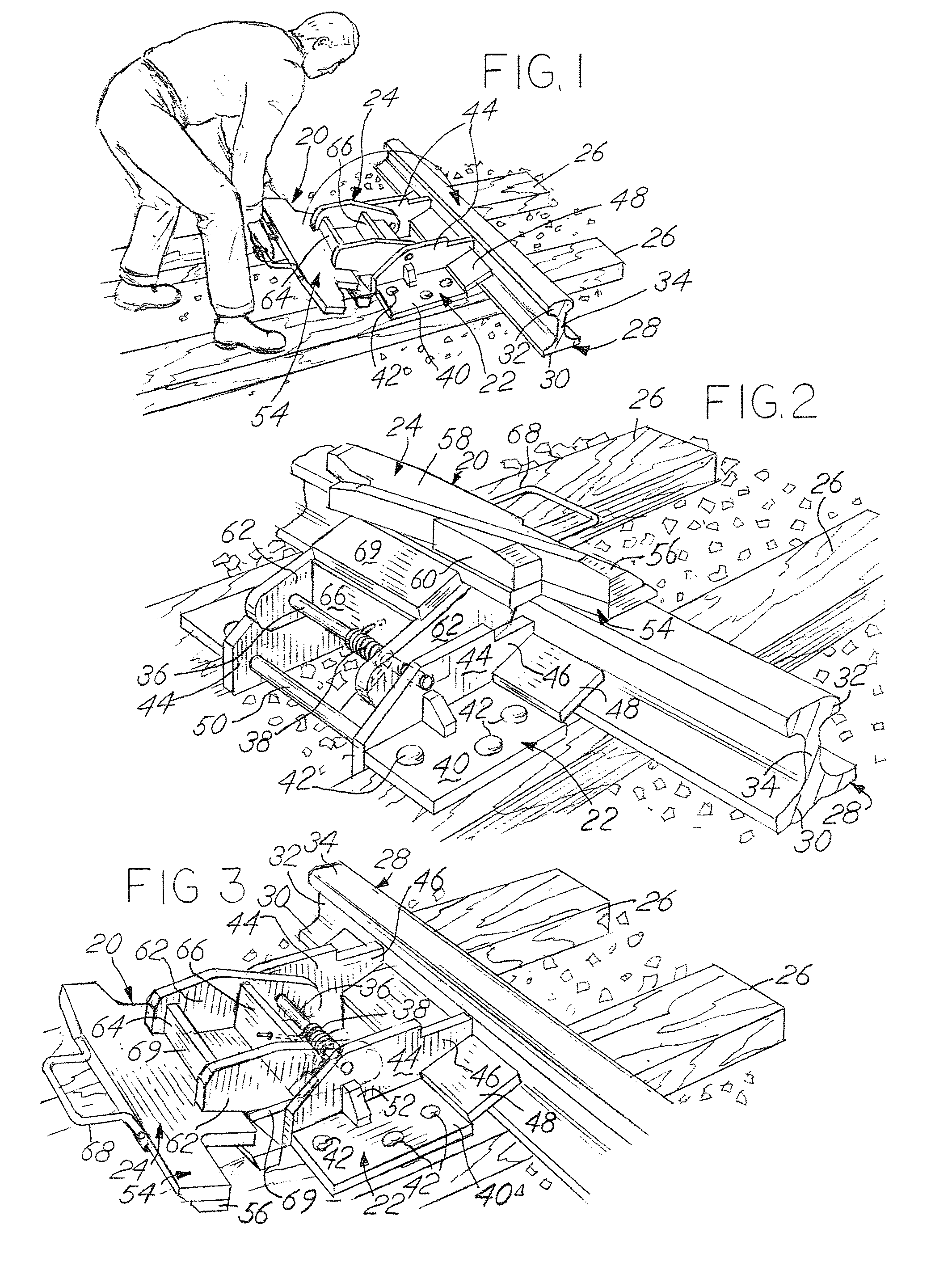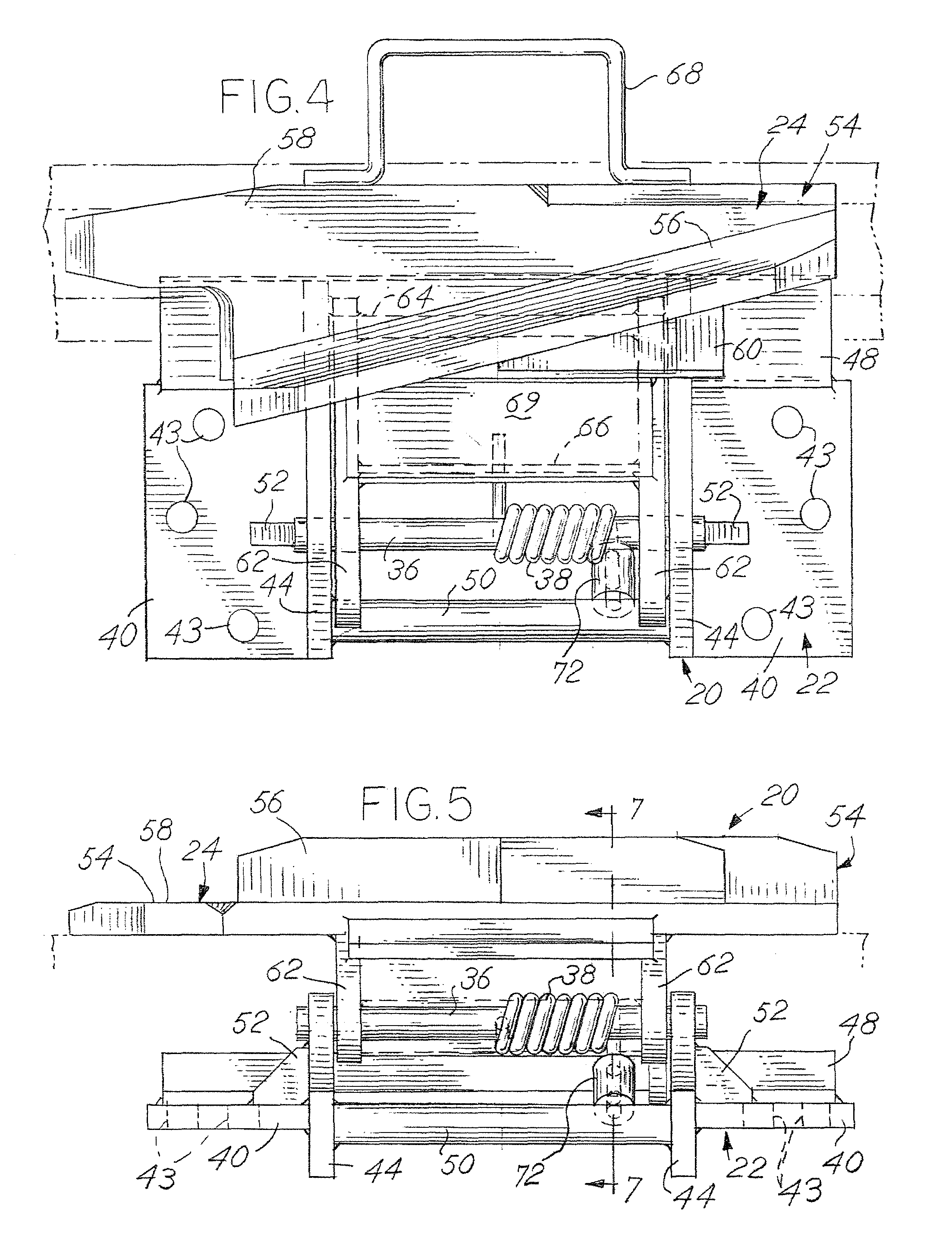Hinged derail with assisted manual lifting and method for constructing
a technology of assisted manual lifting and guiding derailment, which is applied in the direction of railway auxiliaries, transportation and packaging, and interlocking of points, etc., can solve the problems of physical injury, heavy derail shoes are not easily manually rotated between operative and inoperative positions, and the derail shoes are made of solid steel. , to achieve the effect of reducing stress on the worker, no weight, and light weigh
- Summary
- Abstract
- Description
- Claims
- Application Information
AI Technical Summary
Benefits of technology
Problems solved by technology
Method used
Image
Examples
second embodiment
[0038]the invention is shown in FIGS. 9-11. A double ended derail assembly, generally 200, is shown. The derail assembly 200 includes a derail base, generally 202 which pivotally carries a derail shoe, generally 204. The derail assembly 200 is shown in the operative position on a rail 28, shown in dotted line view in FIGS. 9 and 11. Also shown in dotted line view is a pair of railroad ties 26 mounted in a conventional manner transverse to the rail 28. The rail 28 rests upon the upper surface of the ties. The derail shoe 204 of the derail assembly 200 is pivotally mounted about a pivot shaft 206 which is spaced laterally inwardly from the rail 28 and is rigidly mounted on the derail base 202, to be described hereinafter in greater detail.
[0039]A torsion spring, generally 208, as seen in solid-line view in FIGS. 9 and 10 and in dotted-line view in FIG. 11 provides upward biasing or lifting assistance to the operator when the operator manually lifts the derail shoe 204 whether the dera...
embodiment 200
[0048]The specifications for the spring 208, as would be apparent to one skilled in the art, vary depending on the weight of the derail shoe 204. In the double ended derail embodiment 200 of FIGS. 9-11, for example, when the weight of the shoe is heavier in weight and may weigh about 110-120 pounds, the specifications of the spring 208 are as follow:
[0049]
TorsionCylindClose Wound Chrome VanadiumRoundWire Dia (in)0.4060Mean Dia (in)1.7300 + .032Active Coils13.2300Rate (#-in / deg)9.1600Inside Dia (in)1.3240Total Coils13.2300Spring Index C4.2611Outside Dia (in)2.1360Active Legs (in)0.0000Nat Preg (Hz)82.3814Min I.D. (in)1.2867Addl Feed (in)0.0000Body Length (in)5.7774Devel Lngth (in)71.9045Max Bdy Len (in)5.8958Weight (lbs)2.6437FreePoint 1Point 2Moment Arms (in)Force at Arm (lbs)Moment (#-in)Angle (deg)262.8000Deflection (deg)UNK Stress (psi)UNK Stress % of MTS
Manufacturing Method for the Embodiment of FIGS. 9-11
[0050]It is to be understood that the method of manufacturing the double e...
PUM
 Login to View More
Login to View More Abstract
Description
Claims
Application Information
 Login to View More
Login to View More - R&D
- Intellectual Property
- Life Sciences
- Materials
- Tech Scout
- Unparalleled Data Quality
- Higher Quality Content
- 60% Fewer Hallucinations
Browse by: Latest US Patents, China's latest patents, Technical Efficacy Thesaurus, Application Domain, Technology Topic, Popular Technical Reports.
© 2025 PatSnap. All rights reserved.Legal|Privacy policy|Modern Slavery Act Transparency Statement|Sitemap|About US| Contact US: help@patsnap.com



